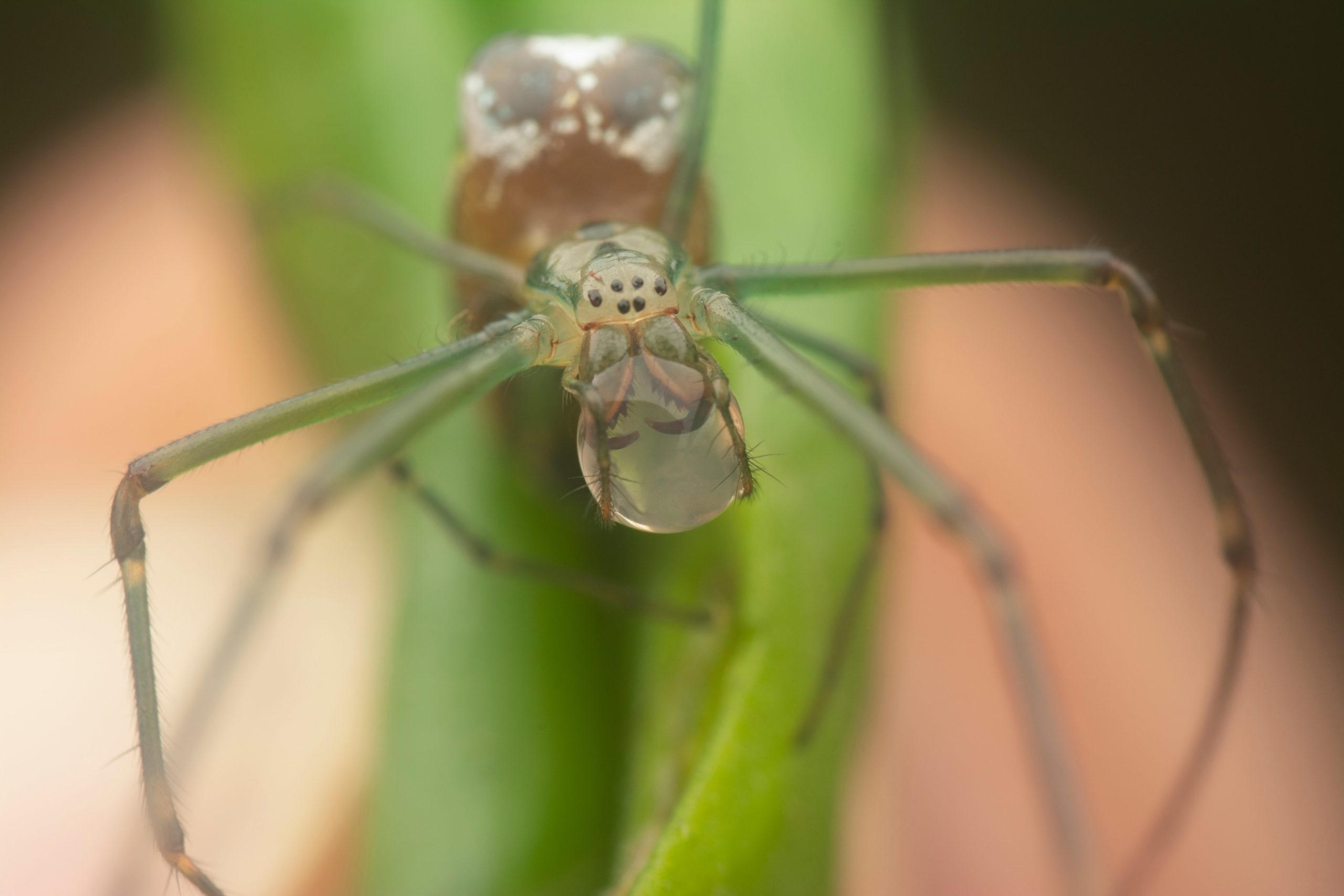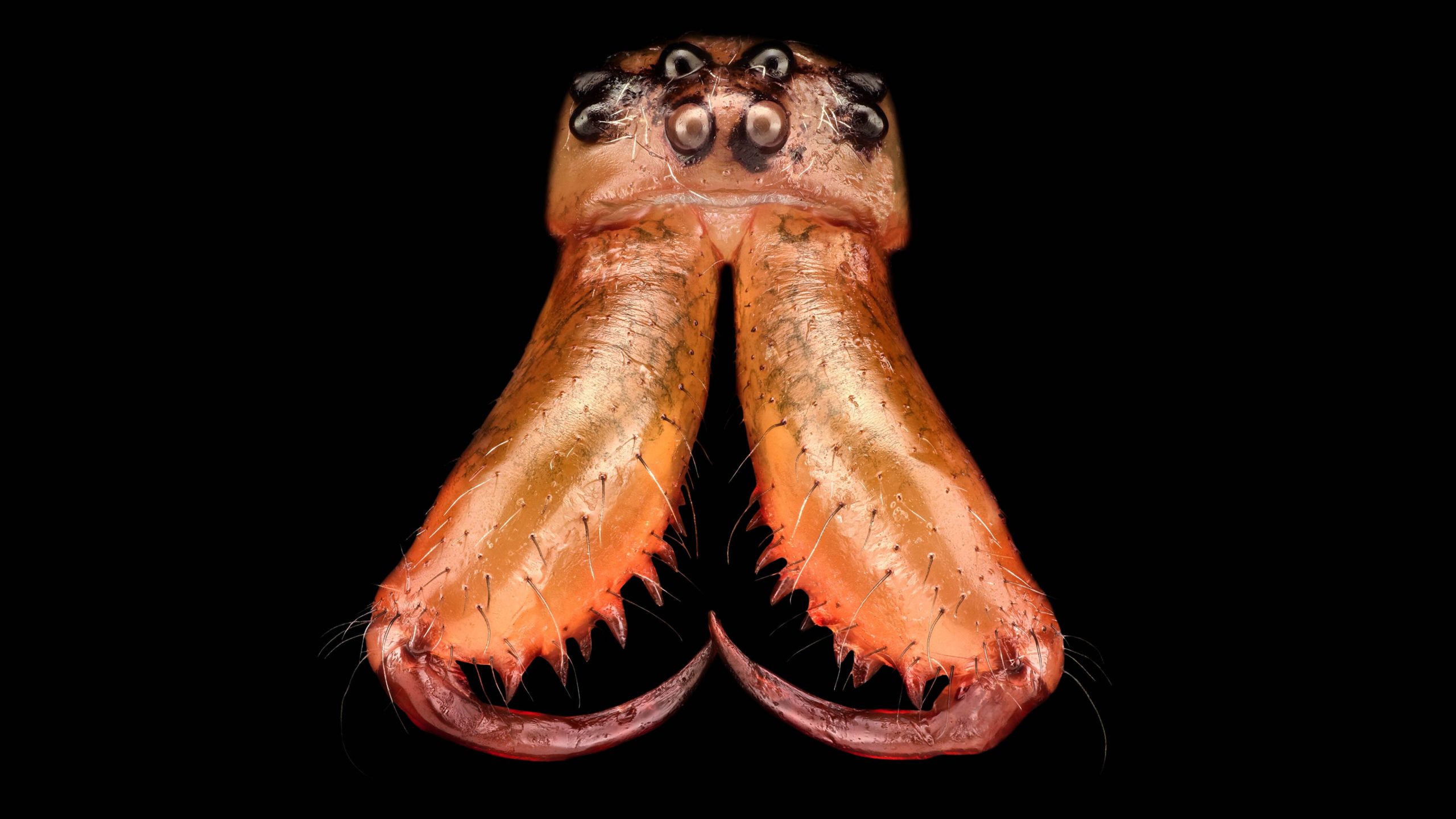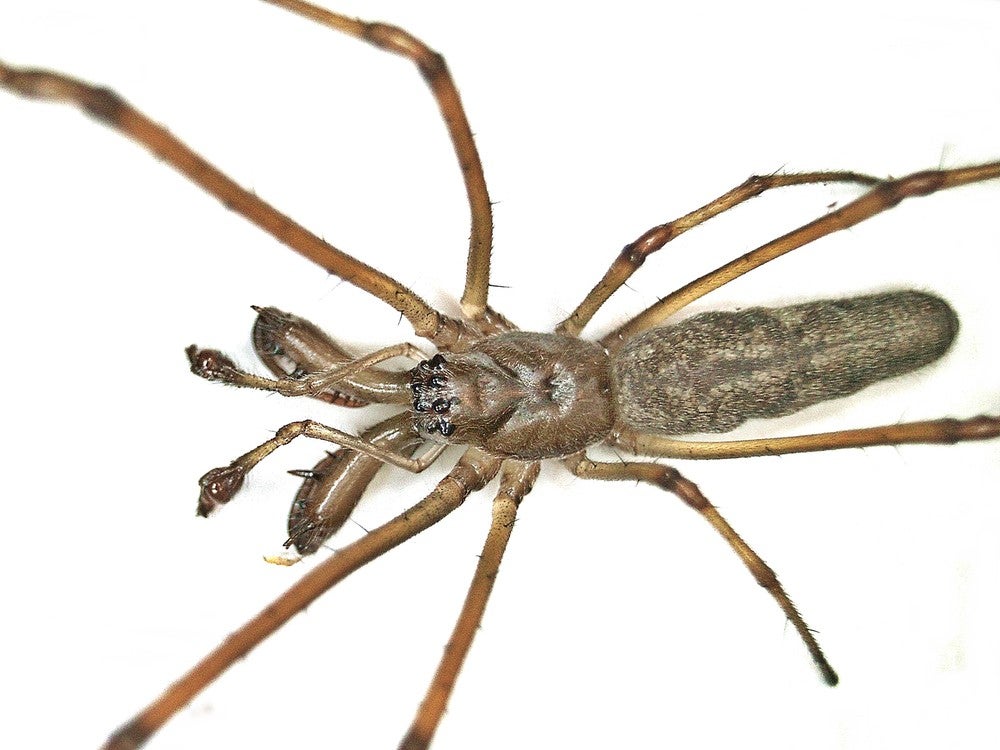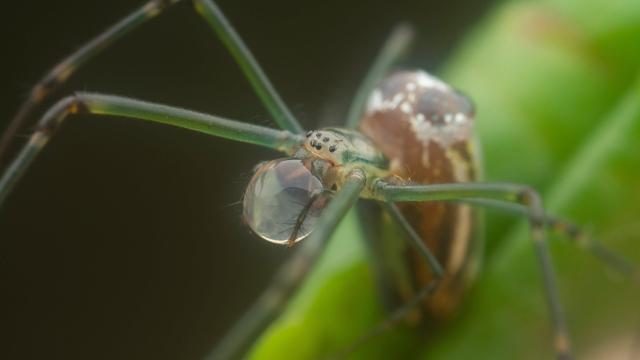If you’re a person who likes barbecue, few things are more disappointing than biting into tough, desiccated brisket. Now, new scientific observations suggest that some spiders might feel the same way about their nuggets of bugs.
Researchers recently documented a spider shuttling a droplet of water from a small pond up into its web. They suspect the spider was using the droplet to rehydrate its half-eaten, silk-swaddled prey in order to suck more nourishment out of it.
One night in late December 2020, John Gould — a behavioural biologist at the University of Newcastle in Australia — was on Kooragang Island in southeastern Australia, surveying the area for a threatened frog species. Near an ephemeral pool, he spotted a long-jawed orb weaver spider (Tetragnatha) suspended in a web anchored in some vegetation. About two minutes later, Gould watched the arachnid suddenly “bungee” down to the pond’s surface, retrieve a large globule of water in its jaws, and race back up the silk line in a matter of seconds.

As soon as the spider ascended to its web with the liquid cargo, Gould knew he “had observed something really peculiar.”
He watched as the spider returned its jaws to a shriveled, partly drained insect it had been feeding on, droplet and all. The first-of-their-kind observations were published in the journal Ethology in January.
Ants are known to move water as they bail out flooded nests, and bees and wasps can move droplets of water around to manipulate the heating and cooling of their colonies. But this orb weaver appears to be the first spider shown to take their water to-go, scooping it up in a surface-tension Nalgene.

Spiders exist on a liquid diet of pre-digested bug slurry, but they also drink water. However, they are generally careful sippers, leisurely imbibing at puddles or dewdrops. Ferrying around an orb of the stuff on their face is a bit more involved.
“These behaviours happen so quickly, I’m not surprised they aren’t often seen or recorded,” said Gould in an email to Gizmodo.
While it’s currently unknown if other spiders also transport water, it is possible that long-jawed spiders’ aptly named bitey parts facilitated the talent. Proportionally, Tetragnatha’s jaws are huge, stretching out of its eight-eyed mug like a pair of thorny, armoured bananas, each tipped with a venomous pickaxe.
“The jaws act almost like a plate to hold the water as they travel,” said Gould.
Gould and his colleagues think the spider may have been intentionally dousing its prey to aid feeding. Spiders eat by liquefying the insides of bugs they have trapped, and flooding a meal that has become a bit too much like jerky could help put more nutrients into solution. It may also help replenish moisture that the spider itself has lost.
“[It’s] a bit like how we might add some more water to rehydrate rice we left out too long, or refill our cup of water to rehydrate ourselves while finishing a meal,” said Jose Valdez, a biologist at the German Centre for Integrative Biodiversity Research in Leipzig and coauthor of the new paper.

Injecting extra digestive enzymes into the carcass costs both calories and water, so engaging in the spider version of dunking an Oreo in milk could be a comparatively cheap strategy to get more out of a kill.
“It’s really cool,” said Dinesh Rao, a behavioural ecologist at the University of Veracruz in Mexico who was not involved in the study. “I agree with them. I don’t think [water transport has] been recorded before” in spiders.
Rao pointed out that some spiders are thought to use their webs as water collection devices, but active transport of water seems unreported until now.
But because this is based on a single observation, there could be alternative explanations for the behaviour, Rao noted. Rather than rehydrating the prey for consumption, wetting the meal could be part of a defensive measure to keep other spiders poaching it. The purpose could also be to wash away insect toxins. Or, soaking silkbound prey is a habit that keeps the prey from struggling too much, since there’s evidence that water droplets in webs assist prey capture in other contexts.
It’s clear that the observations on Kooragang Island are jumping-off point for future, more targeted studies of water gathering in spiders. For Gould and Valdez, the crucial next steps are figuring out how common the behaviour is in Tetragnatha and other spiders where it possibly hasn’t been appreciated before.
The discovery, said Valdez, “demonstrates just how much we don’t know about the nature around us and everything we can learn if we just learn to stop and look.”
